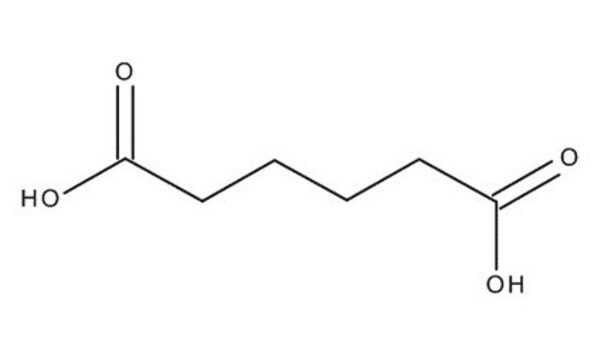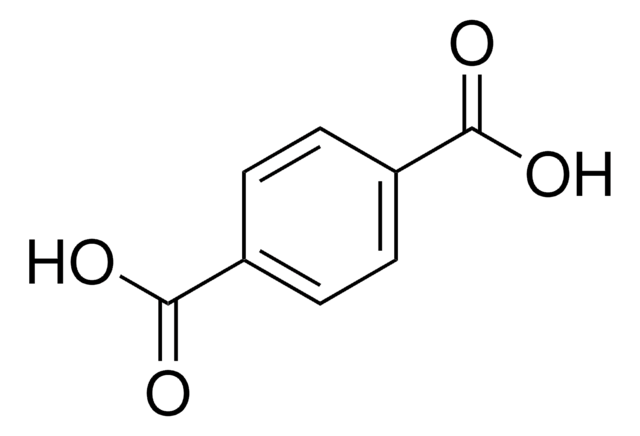Kluczowe dokumenty
Y0000110
Adipic acid
European Pharmacopoeia (EP) Reference Standard
Synonim(y):
Hexanedioic acid
About This Item
Polecane produkty
klasa czystości
pharmaceutical primary standard
agency
EP Reference Standard
gęstość pary
5 (vs air)
ciśnienie pary
1 mmHg ( 159.5 °C)
rodzina API
adipic acid
temp. samozapłonu
788 °F
producent / nazwa handlowa
EDQM
bp
265 °C/100 mmHg (lit.)
mp
151-154 °C (lit.)
Zastosowanie
pharmaceutical (small molecule)
Format
neat
temp. przechowywania
2-8°C
ciąg SMILES
OC(=O)CCCCC(O)=O
InChI
1S/C6H10O4/c7-5(8)3-1-2-4-6(9)10/h1-4H2,(H,7,8)(H,9,10)
Klucz InChI
WNLRTRBMVRJNCN-UHFFFAOYSA-N
Szukasz podobnych produktów? Odwiedź Przewodnik dotyczący porównywania produktów
Powiązane kategorie
Opis ogólny
For further information and support please go to the website of the issuing Pharmacopoeia.
Zastosowanie
Opakowanie
Inne uwagi
produkt powiązany
Hasło ostrzegawcze
Danger
Zwroty wskazujące rodzaj zagrożenia
Zwroty wskazujące środki ostrożności
Klasyfikacja zagrożeń
Eye Dam. 1
Kod klasy składowania
11 - Combustible Solids
Klasa zagrożenia wodnego (WGK)
WGK 1
Temperatura zapłonu (°F)
384.8 °F - closed cup
Temperatura zapłonu (°C)
196 °C - closed cup
Wybierz jedną z najnowszych wersji:
Certyfikaty analizy (CoA)
Przepraszamy, ale COA dla tego produktu nie jest aktualnie dostępny online.
Proszę o kontakt, jeśli potrzebna jest pomoc Obsługa Klienta
Masz już ten produkt?
Dokumenty związane z niedawno zakupionymi produktami zostały zamieszczone w Bibliotece dokumentów.
Nasz zespół naukowców ma doświadczenie we wszystkich obszarach badań, w tym w naukach przyrodniczych, materiałoznawstwie, syntezie chemicznej, chromatografii, analityce i wielu innych dziedzinach.
Skontaktuj się z zespołem ds. pomocy technicznej






